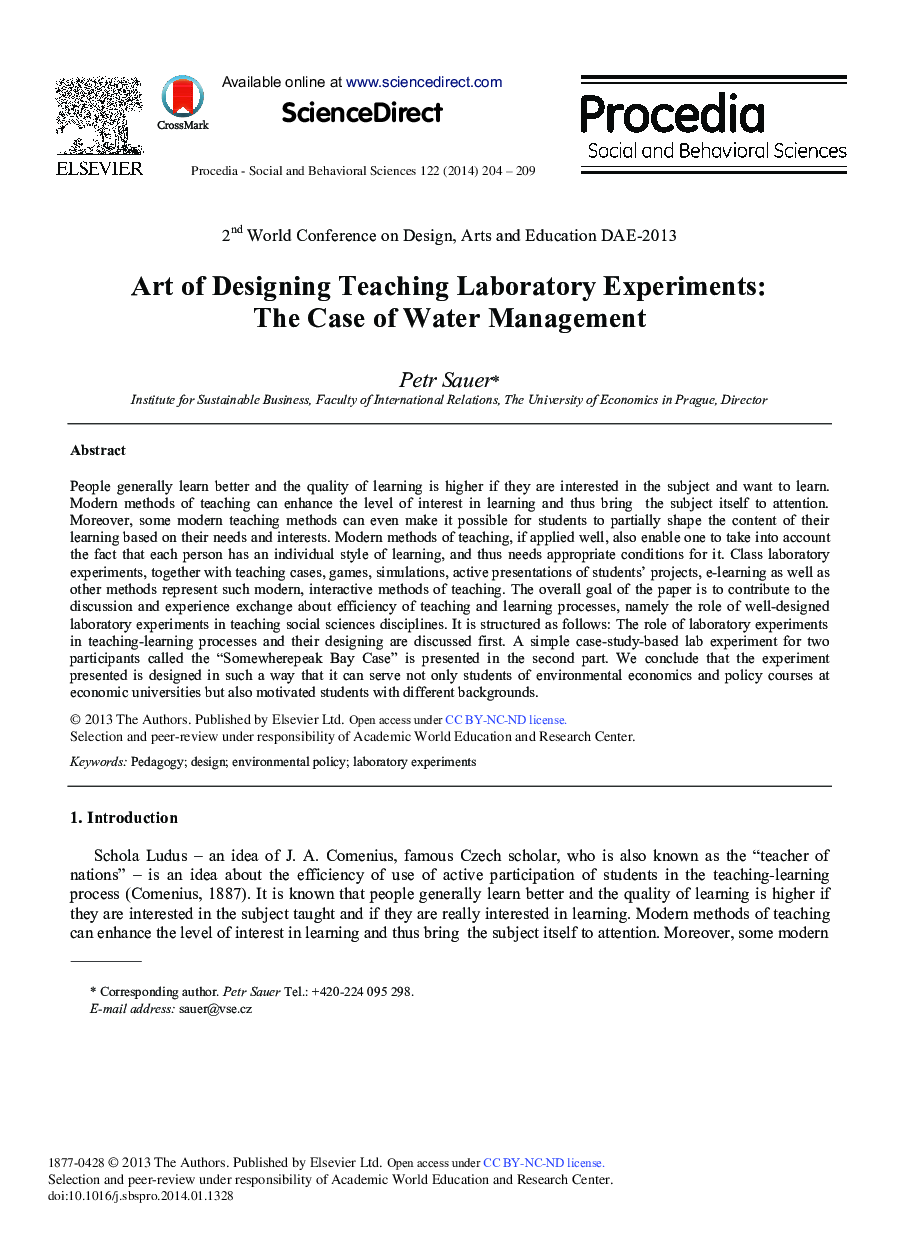| کد مقاله | کد نشریه | سال انتشار | مقاله انگلیسی | نسخه تمام متن |
|---|---|---|---|---|
| 1114886 | 1488437 | 2014 | 6 صفحه PDF | دانلود رایگان |

People generally learn better and the quality of learning is higher if they are interested in the subject and want to learn. Modern methods of teaching can enhance the level of interest in learning and thus bring the subject itself to attention. Moreover, some modern teaching methods can even make it possible for students to partially shape the content of their learning based on their needs and interests. Modern methods of teaching, if applied well, also enable one to take into account the fact that each person has an individual style of learning, and thus needs appropriate conditions for it. Class laboratory experiments, together with teaching cases, games, simulations, active presentations of students’ projects, e-learning as well as other methods represent such modern, interactive methods of teaching. The overall goal of the paper is to contribute to the discussion and experience exchange about efficiency of teaching and learning processes, namely the role of well-designed laboratory experiments in teaching social sciences disciplines. It is structured as follows: The role of laboratory experiments in teaching-learning processes and their designing are discussed first. A simple case-study-based lab experiment for two participants called the “Somewherepeak Bay Case” is presented in the second part. We conclude that the experiment presented is designed in such a way that it can serve not only students of environmental economics and policy courses at economic universities but also motivated students with different backgrounds.
Journal: Procedia - Social and Behavioral Sciences - Volume 122, 19 March 2014, Pages 204-209